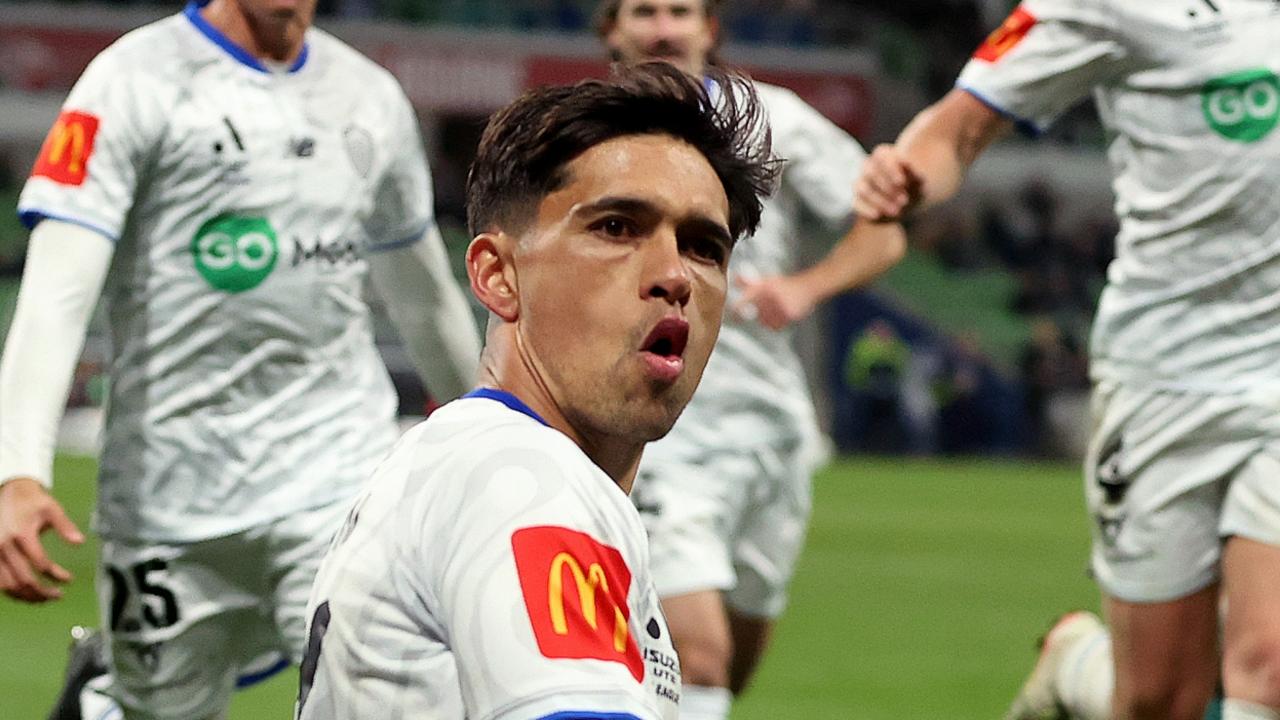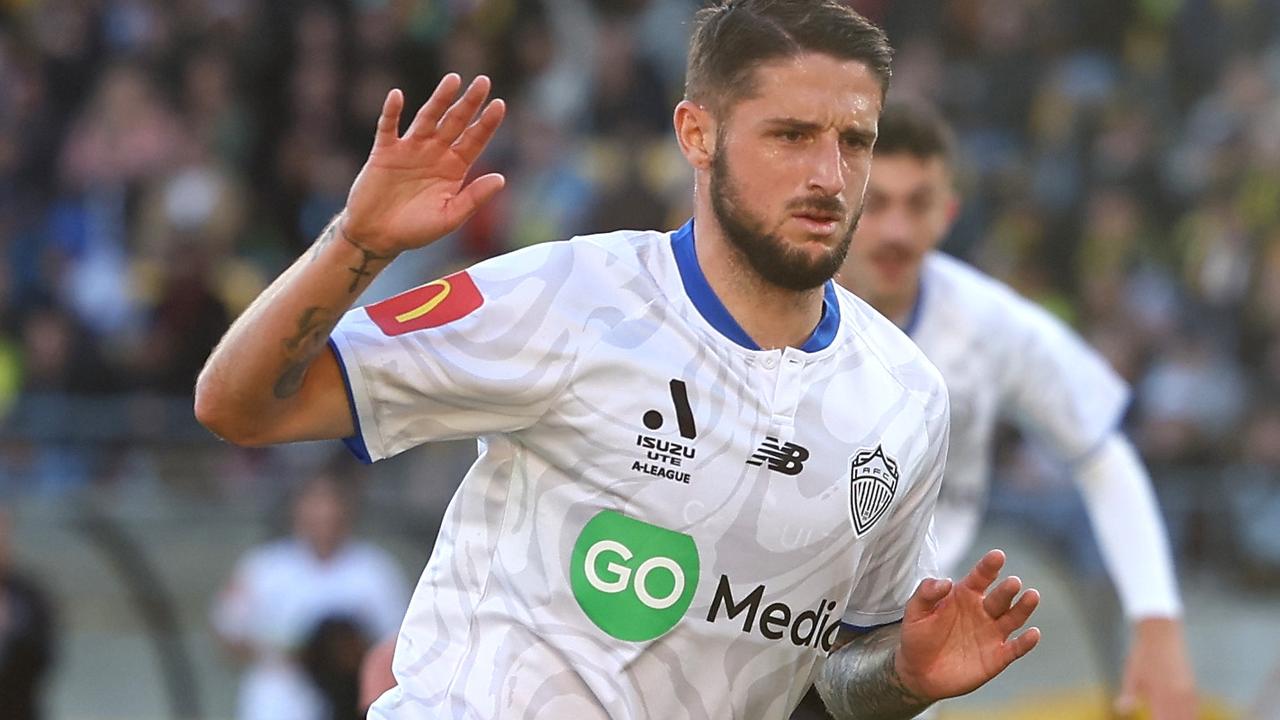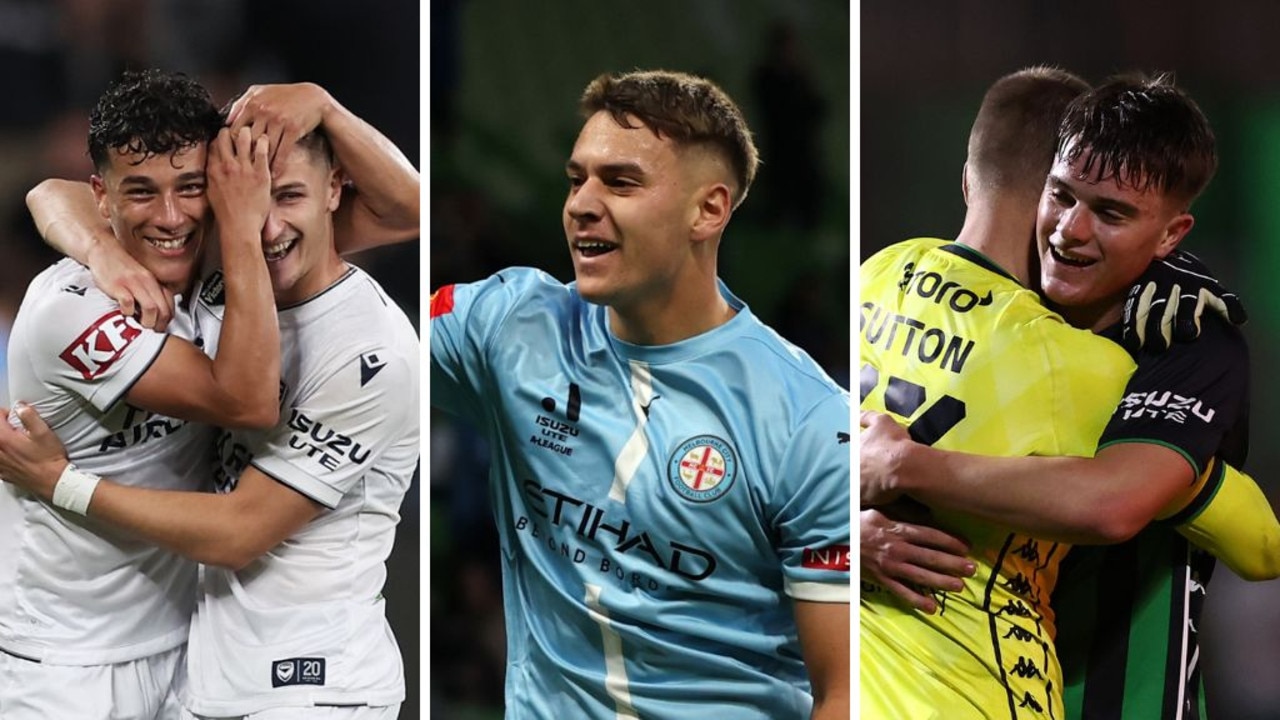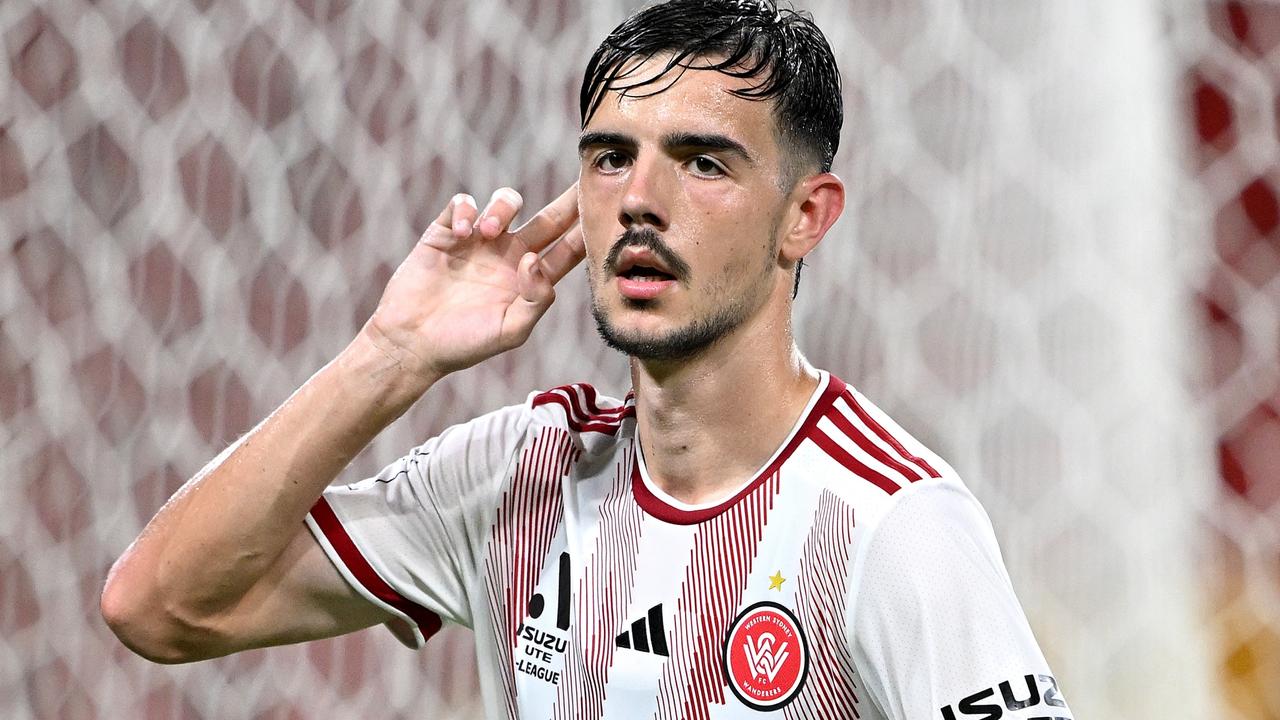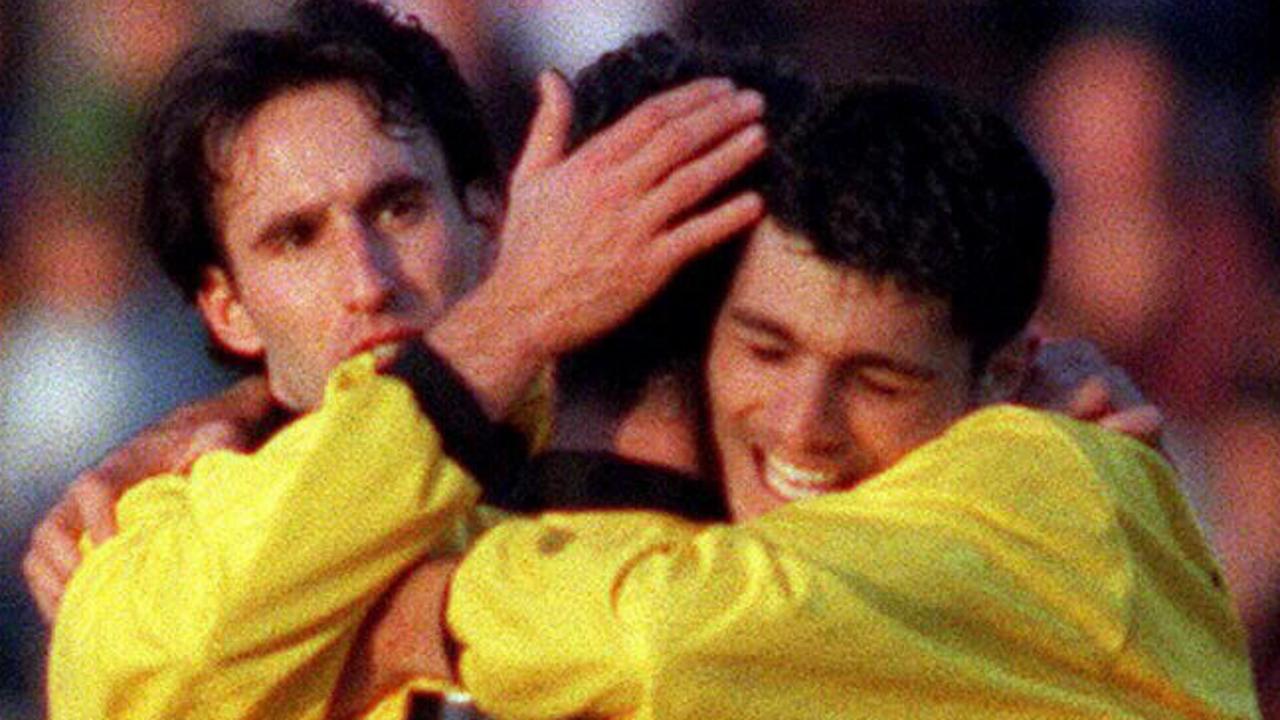Why the Big Blue is red hot: is Sydney FC v Melbourne Victory the biggest rivalry in Australian sport?
SYDNEY FC and Melbourne Victory go head-to-head in another A-League Grand Final this weekend. Is the Big Blue now one of the most compelling rivalries in Australian sport?

A-League
Don't miss out on the headlines from A-League. Followed categories will be added to My News.
WHEN Sydney FC met Melbourne Victory in the first of three matches between the sides in the 2006-07 season, the self-styled “Big Blue” more than lived up to the pugnacious moniker.
Sydney captain Mark Rudan lasted less than a quarter of an hour before seeing red. Later in the same game Mark Milligan was left literally gasping for air after being elbowed in the throat by Victory’s Fred, medics at first concerned he had swallowed his tongue he was so distressed.
SYDNEY SHOWED DOMINANCE RIGHT FROM THE START
BOBO V BERISHA: STRIKING FEAR INTO DEFENDERS’ HEARTS
SYDNEY FC DESPERATE TO MAKE MOST OF HOME COMFORTS
FIVE BIGGEST GAMES FROM SYDNEY FC AND VICTORY’S RIVALRY
The match at Docklands Stadium saw three goals in the first 20 minutes, a penalty, own goal and, ultimately, a 3-2 win for the home side. That match contained all the frenetic tension of a clash that meant more than just the three points on offer to those watching and taking part. And played out in front of a crowd close to 40,000 watching a code of football supposedly well down the order of things in Australia.
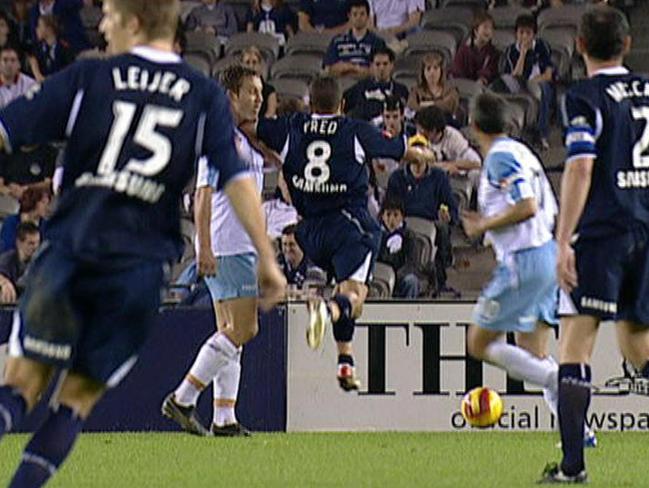
That season was only the second of the newly formed A-League. The match was just the fourth time the sides had met and was an early season spat with little of competition significance riding on it. To be so infused with such meaning so soon might have caught some off guard. But it should not have been a surprise. It was virtually designed to be thus.
A TALE OF TWO CITIES
To understand the birth and rapid (and rabid, at times) growth of what is now unquestionably one of Australian sport’s great rivalries, one simply needs to be aware of the latent parochial animosity between two great cities, easily transplanted on to a sport in which such feelings are not so much accepted as actively nurtured.
Sydney and Melbourne, while to an outsider as similar as brothers in many regards (the weather notwithstanding), like many siblings, simply don’t get on. Hell, they had to build a whole new city to act as capital for the nation so as to keep egos in check.
A fierce sense of civic pride exists in both of Australia’s largest cities. And few expressions of that come without at least some degree of relativism directed towards the other. Nowhere more keenly than in the acutely tribal realm of sport.
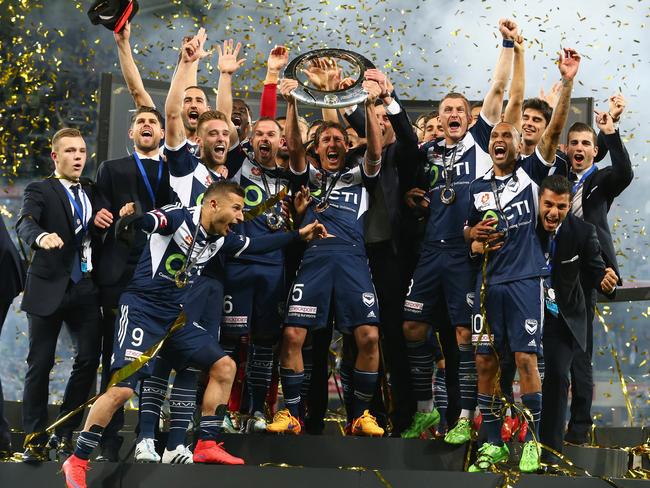
Football before the establishment of the national A-League ran in large part on local lines, a mesh of regional leagues and clubs often split down ethnic divisions. In an ambitious bid to take the game truly and institutionally national, a one city, one club policy was pursued at the outset of the new competition, with clubs formed to represent the metropolitan areas.
The thinking in part was that civic rather than ethnic ties would bind in a more progressive and less toxic way. That was the theory, anyway.
And so when the league began the natural focus for those seeking friction and conflict was to be found between the two clubs built to represent Melbourne and Sydney. A point underlined when that fixture was deliberately billed as the first to be played.
In the decade and more that has followed, both cities have seen a second club born. That made natural sense when expansion was on the cards, the large populations there better able to support new clubs than regional outposts. But also recognised the value of passions generated in derby clashes. The noise and fury from which also make for a better product to sell to TV broadcasters, financial partners and advertisers.
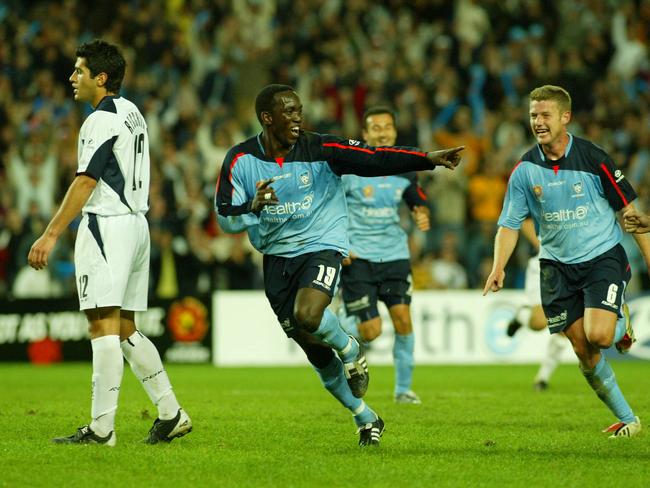
Western Sydney against Sydney FC is already a febrile encounter. Victory fans relish success over Melbourne City, nee Heart. But in a league that, by world standards, is still in its infancy, the history between the two foundation sides had already taken root to such degree that the fixture’s pre-eminence endures.
FAMILIARITY AND CONTEMPT
Any rivalry needs stories, memories of battles won and injustices, real or imagined, harboured. And part of the fixture’s fascination has been its capacity to deliver on that. This weekend’s Grand Final will be the third between the sides in seven years. The ledger is even, with a victory each — Melbourne having steamrolled Sydney in 2015 in a one-sided contest; the first penalty shootout to decide the big prize going Sydney’s way in 2010 at the end of a pulsating match that ended 1-1.
The first thrashing was dished out in Victory’s favour in the first season of the A-League, club legend Archie Thompson producing a masterclass to inspire a 5-0 drubbing, the team’s third goal etched in collective folklore as he twisted the blood of half the Sydney side in the process of scoring.
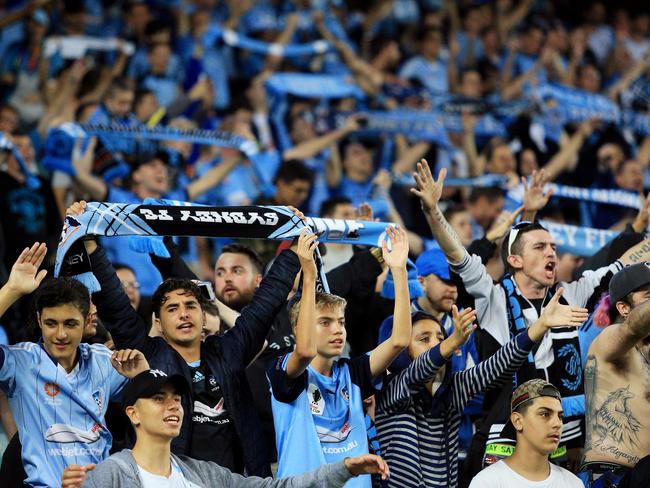
Eight years later and revenge for that indignity was, finally, served. The same scoreline but a different result, on this occasion marquee man Alessandro Del Piero providing the magic for Sydney.
In 2013 the sides traded breathless victories by the odd goal in five. A young Andrew Nabbout came off the bench in Ange Postecoglou’s first Big Blue as Victory boss to overturn a 2-0 deficit, before 10-man Sydney dug in heroically to withstand a second half onslaught to defend a slender lead in a subsequent match.
Familiarity over 41 encounters has done little to quell the contempt. It is the first fixture both sets of fans look for when the schedule comes out.
A SENSE OF IDENTITY
The on-field intensity is matched in the stands, both in NSW and Victoria. In a sporting landscape where competition for fans and bums on seats is perhaps greater than Australia’s population can adequately meet, the numbers who turn up for each Big Blue are testament to its enduring importance.
Distance mitigates against mass travelling for interstate clashes — though those who do board the planes between the cities consistently make themselves both seen and heard — and so the genuine derby matches of late have bossed the attendance records, most significantly the 62,000 who witnessed Western Sydney Wanderers’ chastening 4-0 defeat to Sydney FC at the start of this season.
But the record that figure broke for a regular season game was a meeting between Victory and the Sky Blues back in 2006, when more than 50,000 punters turned up.
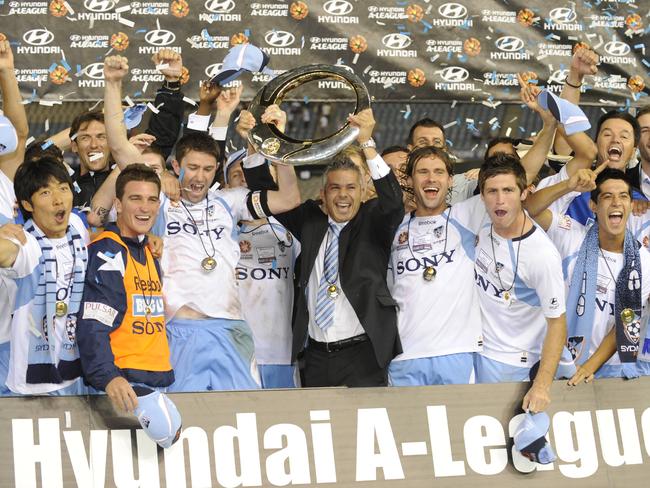
The interest in matches between the Wanderers and Victory, or City and Sydney FC continue to grow, but there is an acceptance — perhaps because they were here first, because there is some level of history — that the defining intercity contest remains the Big Blue.
Playing into this belief is the caricature of Sydney FC that Melburnians project on to the harbour city more generally, that of the cashed-up, arrogant, self-important blowhards. The Wanderers fans don’t as readily fit this neat stereotype.
For their part Melbourne Victory represent Victorian football in a way that Melbourne City may one day, but currently do not, especially with their ties to an international group and their smaller band of loyalists. Sydney fans enjoy beating any side from Melbourne, but, perhaps, Victory more so for those reasons.
THE FINAL COUNTDOWN
And so this weekend’s final offers another chance to enjoy a rivalry older than federation in a sporting context less than two decades old. And one that has all the right ingredients for passions to be ignited once more.
Sydney’s incredible season of just a single league defeat makes them favourites, as does home advantage and a recent history of three Big Blue wins in the season that closes on Sunday. How sweet, then, for Melbourne, the second-best team across the season according to the league ladder, to come to the belly of the beast and steal the prize, and a validation of greatness, away.

For the managers, the pragmatic, unsentimental Graham Arnold and Victory’s more hot-headed Kevin Muscat, whose playing association with this fixture goes back to its beginning, this week will see them talking of calm heads and professionalism; of focus and playing the game rather than the occasion.
But don’t believe them for a second. They have both been around this fixture often enough to know what it means. And you can be sure their teams will take to the field with that knowledge re-emphasised to them in no uncertain terms.
In Australian domestic football it doesn’t come any bigger than this. Light the big blue touch paper and enjoy the fireworks.
Originally published as Why the Big Blue is red hot: is Sydney FC v Melbourne Victory the biggest rivalry in Australian sport?


